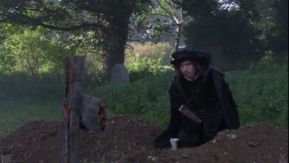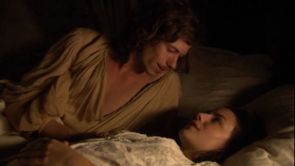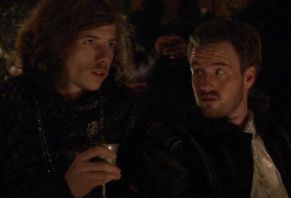Thomas Tallis
Jump to navigation
Jump to search
UNFORGETTABLE CHARACTER QUOTES
DEFINING EPISODES | MEMORABLE SCENES
PHOTOS
Thomas Tallis as played by Joe Van Moyland AKA Joe Lean
Known as "The Father of English Cathedral Music"
| born c. 1505/1514- died 23 November 1585 | |||
| Character's Backstory: *This is a fictional character based loosely on a historical one*. In actual history, Thomas Tallis served the Royal Chapel as organist and composer during the reigns of Henry VIII, Edward VI, Mary I, and Elizabeth I. Social Status: Commoner Position: Appointed Gentleman of the Chapel Royal in 1543 Personality Type: His epitaph says it all Signature Look: Messy hair Endearing Traits: His genius for sacred music and his ability to hide his true faith. Gentle, soft-spoken personality. Perceptive and modest. Annoying Traits: To some, his hair
| 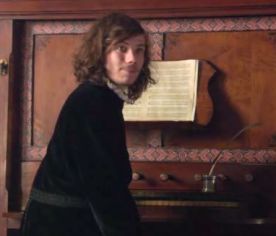 " As he did live, so also did he die, in mild and quiet sort (O happy man)" ~ Epitaph of Thomas Tallis
Click EasyEdit to update this page! (Don't see the EasyEdit button above? <a href="../#signin" target="_self">Sign in</a> or <a href="../accountnew" target="_self">Sign up</a>.) | ||
CHARACTER CONNECTIONSFamily Members Romances William Compton ( fictional -- no historical support for this as Compton who was at least 23 - 33 years older than Tallis died in 1528 and there is no record of Tallis in court before 1532) Twin sisters Jane and Joan; he marries Joan. Marriage Joan ____? 1552 (no children) | Friends William Compton in the series Thomas Wyatt in the series Jane and Joan (twin sisters) William Byrd, pupil (later in life) in reality Enemies None known |
UNFORGETTABLE CHARACTER QUOTES
|
DEFINING EPISODES | MEMORABLE SCENES
|
| <embed flashvars="transition=Fade&site=http://tudorswiki.sho.com&imageServer=http://image.wikifoundry.com&albumId=42374" height="400" src="http://widget.wetpaintserv.us/wiki/thetudorswiki/widget/unknown/45909ef0758488facc6598347334cf5e8a560357" type="application/x-shockwave-flash" width="400" wmode="transparent"/> |
PHOTOS
 | 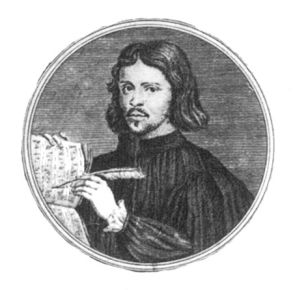 The only known authentic image of Thomas Tallis, an engraving from around 1550. |
| | |
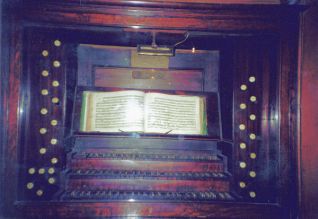 St Alfege's Church: the Thomas Tallis organ console which is located in the north/west aisle. | Thomas Wyatt with Tallis |
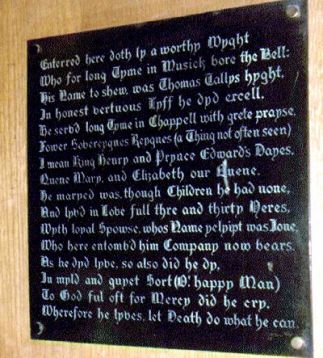 Thomas Tallis epitaph at Greenwich Parish Church | 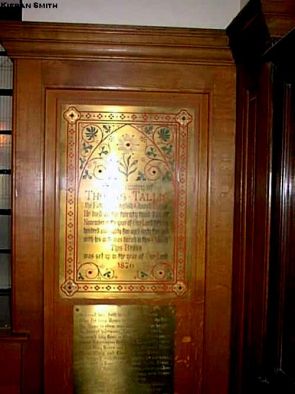 |
| <embed height="254" src="http://widget.wetpaintserv.us/wiki/thetudorswiki/page/Thomas+Tallis/widget/youtubevideo/-661459746" type="application/x-shockwave-flash" width="308" wmode="transparent"/> | <embed height="253" src="http://widget.wetpaintserv.us/wiki/thetudorswiki/page/Thomas+Tallis/widget/youtubevideo/1891750855" type="application/x-shockwave-flash" width="307" wmode="transparent"/> |
*Below - BBC DOCUMENTARY in 3 parts - SACRED MUSIC SERIES: EPISODE 3 OF 4: Tallis, Byrd and the Tudors Four-part documentary series in which Simon Russell Beale explores the flowering of Western sacred music. Beale takes us back to Tudor England, a country in turmoil as monarchs change the national religion and Roman Catholicism is driven underground. In telling the story of Thomas Tallis and William Byrd, two composers at the centre of England's own musical Renaissance, Beale visits parish churches, great cathedrals and a private home where Catholic music would have been performed in secret. This is a documentary series in which actor and former chorister Simon Russell Beale explores the flowering of Western sacred music. Taking the viewer on a pilgrimage spanning six centuries Simon presents a rich mix of personal, political and musical stories. Each episode features some of the greatest music ever written. <a class="external" href="http://www.open2.net/sacredmusic/abouttheseries.html" rel="nofollow" target="_blank" title="http://www.open2.net/sacredmusic/abouttheseries.html">http://www.open2.net/sacredmusic/abou...</a> Episode-3: Tallis, Byrd and the Tudors Beale takes us back to Tudor England, a country in turmoil as monarchs change the national religion and Roman Catholicism is driven underground. In telling the story of Thomas Tallis and William Byrd, two composers at the centre of England\'s own musical Renaissance, Beale visits parish churches, great cathedrals and a private home where Catholic music would have been performed in secret. |
<embed allowfullscreen="true" height="385" src="http://widget.wetpaintserv.us/wiki/thetudorswiki/widget/youtubevideo/17238af6c6e5d5b1df7524e47bd395d9c99bdeea" type="application/x-shockwave-flash" width="480" wmode="transparent"/> |
<embed allowfullscreen="true" height="385" src="http://widget.wetpaintserv.us/wiki/thetudorswiki/widget/youtubevideo/058ceeb77d59ae115ae202357c5c37eadd6d35ea" type="application/x-shockwave-flash" width="480" wmode="transparent"/> |
<embed allowfullscreen="true" height="385" src="http://widget.wetpaintserv.us/wiki/thetudorswiki/widget/youtubevideo/d68fb00d717146ab1b5f65571a82578bb10c922a" type="application/x-shockwave-flash" width="480" wmode="transparent"/> |

